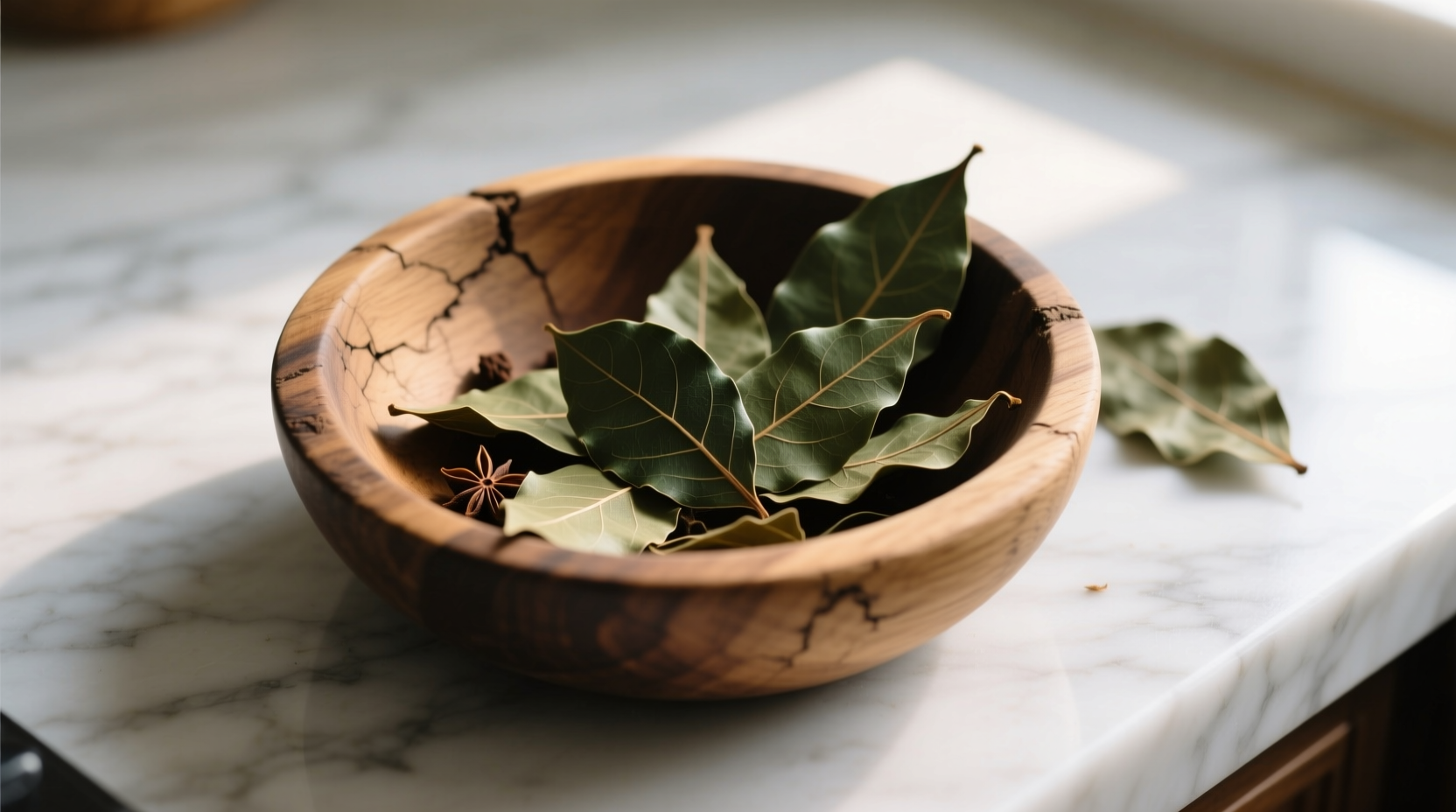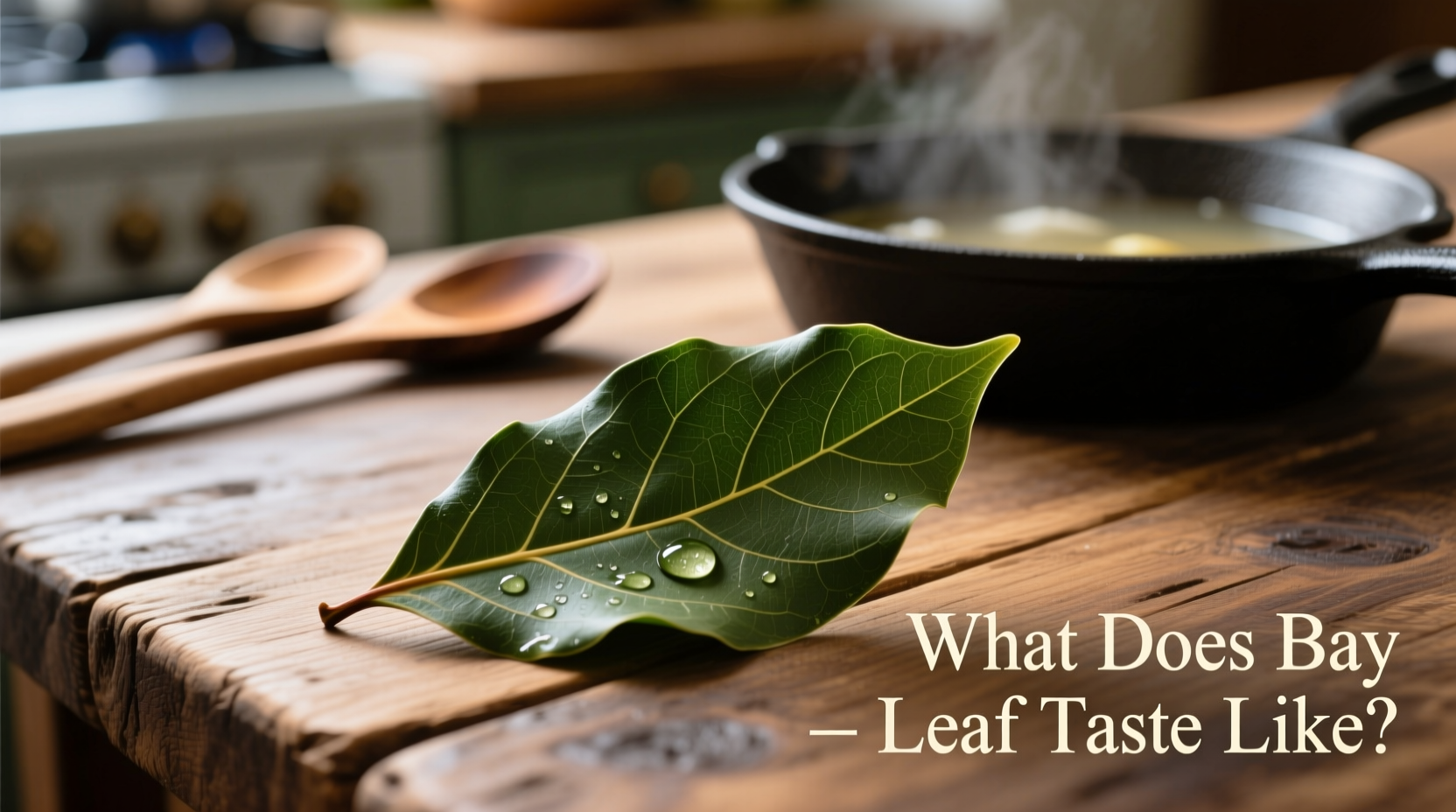Understanding Bay Leaf's Unique Flavor Chemistry
Bay leaves (Laurus nobilis) contain essential oils including eugenol, linalool, and myrcene that create their distinctive flavor profile. When added to cooking liquids, these compounds slowly infuse dishes with a sophisticated background note that's difficult to pinpoint but essential to many classic recipes. Food scientists at the University of California Davis have identified over 30 volatile compounds in bay leaves that contribute to their complex aroma profile, explaining why they're considered a "background singer" rather than a "soloist" in culinary applications.

How Bay Leaves Actually Taste When Chewed
If you've ever accidentally bitten into a bay leaf, you know they're surprisingly bitter and unpleasant when eaten whole. This is due to their tough, fibrous texture and concentrated essential oils. Unlike softer herbs like basil or parsley, bay leaves maintain their structural integrity during cooking, which is why they're always removed before serving. The USDA FoodData Central database confirms that bay leaves contain higher concentrations of certain terpenes that become pleasant when diluted in liquid but overwhelming when consumed directly.
Why Bay Leaves Are Culinary Secret Weapons
Professional chefs rely on bay leaves for what culinary expert Antonio Rodriguez calls "flavor scaffolding"—they provide structural support to a dish's flavor profile without dominating it. When simmered in stocks, soups, or stews for 20-30 minutes, bay leaves release their compounds gradually, creating depth that's noticeable only when missing. This slow-release characteristic makes them ideal for long-cooking dishes where immediate herb flavors would dissipate.
| Characteristic | Fresh Bay Leaves | Dried Bay Leaves |
|---|---|---|
| Flavor Intensity | Milder, greener notes | More concentrated, earthier |
| Aromatic Compounds | Higher linalool content | More eugenol development |
| Best Used In | Fish dishes, quick sauces | Long-simmered stocks, braises |
| Storage Life | 2-3 weeks refrigerated | 1-2 years in airtight container |
Contextual Boundaries: When Bay Leaves Shine (and When They Don't)
Understanding bay leaf's limitations is crucial for proper usage. They excel in liquid-based dishes where they can slowly release flavor, but become bitter in dry-heat applications. The American Culinary Federation's research shows bay leaves reach optimal flavor extraction between 20-45 minutes of simmering—any longer and they develop unpleasant tannic notes. They're perfect for:
- Stocks and broths (add at beginning of cooking)
- Braised meats (remove after 1-2 hours)
- Tomato-based sauces (add midway through cooking)
- Rice dishes (remove before serving)
Avoid using them in:
- Quick sautés or stir-fries
- Raw preparations like salads
- Dry rubs (they won't release flavor properly)
- Desserts (their savory profile clashes with sweets)
Historical Evolution of Bay Leaf Usage
Bay leaves have evolved from ceremonial objects to kitchen staples. Ancient Greeks crowned victors with bay laurel wreaths, believing the leaves conferred wisdom. Roman chefs first documented culinary use in Apicius' De Re Coquinaria (1st century CE), where they recommended bay for masking gaminess in meats. During the Middle Ages, European apothecaries prescribed bay leaves for digestion, which likely contributed to their adoption in hearty meat stews. The spice's journey to global pantries accelerated with 16th century maritime trade routes, as documented by the International Herb Association's historical archives.
Practical Application Guide for Home Cooks
For optimal flavor extraction without bitterness:
- Quantity matters: Use 1-2 leaves per quart of liquid—more creates medicinal flavors
- Timing is critical: Add early in long-cooked dishes, midway in shorter preparations
- Storage secrets: Keep dried leaves in airtight containers away from light (they lose potency after 1 year)
- Proper removal: Always fish out leaves before serving—they won't soften with cooking time
Professional chefs often toast dried bay leaves in a dry pan for 30 seconds before use, which enhances their aromatic compounds. This technique, validated by flavor chemists at the Culinary Institute of America, increases volatile oil release by approximately 25% compared to using leaves directly from the package.
Common Bay Leaf Mistakes to Avoid
Even experienced cooks make these errors:
- Leaving them in finished dishes: Creates unpleasant mouthfeel and potential choking hazard
- Using California bay (Umbellularia californica): This relative contains umbellulone which can cause headaches
- Overusing: More than 2 leaves per quart makes dishes taste medicinal
- Using stale leaves: Old bay leaves lose flavor but retain bitterness
When You Need a Bay Leaf Substitute
If you're out of bay leaves, consider these alternatives based on your dish:
- For stocks/broths: 1/4 tsp dried thyme + small parsley stem (provides similar herbal backbone)
- For tomato sauces: 1 dried oregano leaf + pinch of basil (mimics the earthy notes)
- For meat braises: 1 juniper berry + 1 allspice berry (creates comparable depth)
Remember that substitutes won't replicate bay leaf's exact profile—they'll provide functional alternatives when bay leaves aren't available. The International Association of Culinary Professionals notes that no single herb perfectly replaces bay leaf's unique combination of floral, herbal, and subtle spice notes.











 浙公网安备
33010002000092号
浙公网安备
33010002000092号 浙B2-20120091-4
浙B2-20120091-4